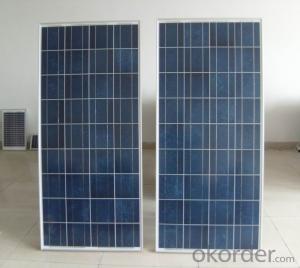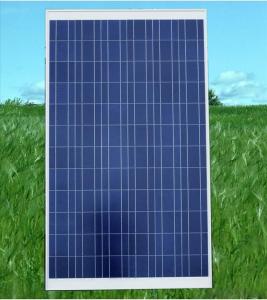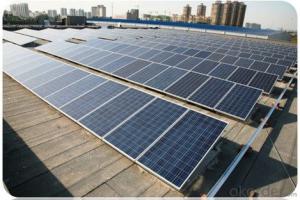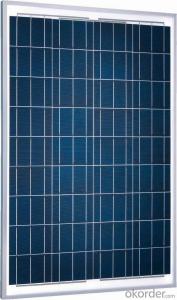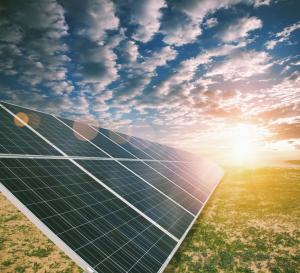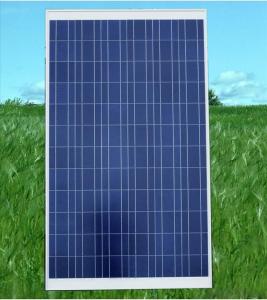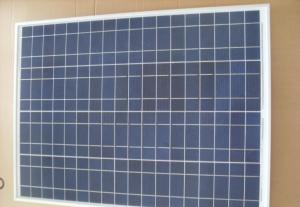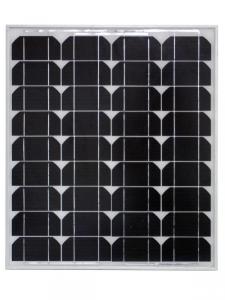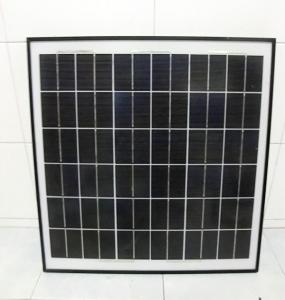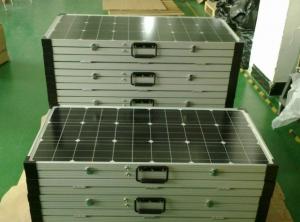Double Sided Silicon Polycrystalline Solar Panel 265Wp
- Loading Port:
- Shanghai
- Payment Terms:
- TT OR LC
- Min Order Qty:
- 200000 watt
- Supply Capability:
- 10000000 watt/month
OKorder Service Pledge
OKorder Financial Service
You Might Also Like
Specification
Solar cell module production process
The product portfolio of CNBM SOLAR covers high-quality solar modules in various sizes and designs to suit different deployment needs – from small roof-top systems to commercial and industrial systems to utility-scale photovoltaic power plants.
FAQ:
1. How long will my inquiry get response?
Your inquiry related to our products or prices will be replied within 24 hours.
2. Can I get professional service and suggestion?
Well-trained and experienced staffs to answer all your questions in fluent English.
3. Do you accept OEM or customized design?
OEM & ODM, any your customized lightings we can help you to design and put into product.
4. What if I need specific design?
Distributorship are offered for your unique design and some our current models.
About us
We are a high-tech group wich specializes in solar products design,research, manufacture, sales,solar projects design and installation.
Our national sales service covers seven parts, including northeast, north, east, middle, south, northwest and southwest, international sales covers five continents and over forty countries, including Germany, Italy, Spain, France, America and Brazil etc.
We now provide Polycrystalline Silicon Solar Module;Thin Film Solar Module;Monocrystalline Silicon Solar Module Feature of our product
High conversion efficiency mono/poly-crystalline amorphous silicon solar cells
Modules incorporate high performance bypass diodes to minimize the power drop caused by shading
High transmittance, low-iron tempered glass
High performance EVA resin to prevent destroying and water.
AI frame: without screw, corner connection. 8 holes on the frame can be installed easily
Good performance of preventing from atrocious weather such as wind and hails
Certifications: CE IEC TUV VDE, Class I
10 years 90% output warranty
25 years 80% output warranty
Depends on various demands from different customers, CNBM could supply any kinds of service to meet you, please feel free to contact us at any time.
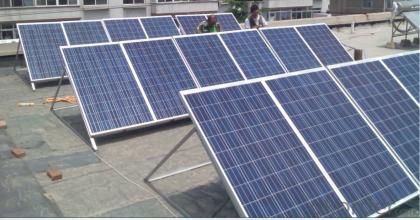
With the company crossing the threshold of 1 GW installations in 2013 and with 700 MW installed in 2014 alone, the photovoltaic modules from CNBM SOLAR are successfully used by satisfied customers in a large number of projects all around the world – from small residential systems up to utility scale systems. On this page you will find a selection of projects in the residential, industrial / commercial and utility segments featuring CNBM SOLAR high quality mono- and polycrystalline solar modules, deployed in different countries worldwide.
In our Download Center you will find several useful documents such as product datasheet (section: Tech Specs & Manuals), certificates and insurances (section: Certificates), warranties (section: Warranties and BTC) and other documentation (section: Further Downloads) in several languages for download.
- Q: Can solar panels be used in deserts?
- Yes, solar panels can be used in deserts. In fact, deserts are ideal locations for solar panel installations due to the high levels of sunlight and low cloud cover. The abundance of sunlight in deserts makes them an excellent environment for generating solar energy efficiently.
- Q: how fast does a 25watt solar panel generate power to a battery? trying to figure out a conversion factor here to get a rough estimate of how many i would need to power my house, please help?
- how fast? what does speed have to do with? Electricity travels at close to the speed of light. A house requires kW at a minimum, and 2 to 5 kW at peaks. You can do the division, 5000/25 = 40. Plus, solar panels operate only 4 to 8 hours a day in the winter, so you need to multiply that number by about at least 6 to allow for the dark hours. .
- Q: If I wanted to add solar panels to my home to produce on average, 8 kWh of electricity daily, how much do you estimate it would cost using state of the art technology?I live in Virginia (Washington DC Metro Area), and I have Dominion Power. I pay the following electric rates:Jun-Sep $0.0904/kWhOct-May $0.0776/kWhAnnual Ave: $0.0824/kWhDistribution charges add on approximately another $0.0228/kWh.How long would the ROI for an 8 kWh/day solar system be?
- Figure 8 hours of sun per day, so 8 kW-hr is a rate of kW, which is a medium sized panel, probably not enough to operate your house totally, unless you have a very small unit. Averaged over 24 hours, that is power at a rate of only 300 watts, enough for a TV. Average US home use is .2 kW, which over 24 hours is 29 kW-hr, plus you need extra for cloudy days, peak demands, and to charge batteries. You have to decide off-grid or on-grid, and if you want to (and are allowed to) sell excess power to the power company. Off gird, the cost of batteries and charge controller are a large part of the cost. On-grid, you have to purchase equipment approved by the power company to match your power with the grid. Panels will cost about $3 per watt, so for 000 watts that is $3000. Double that for installation, then add in cost of charge controller, inverter, batteries, etc. The last items depend on your alternatives, see paragraph above. .
- Q: Can solar panels be used in areas with high pollution levels?
- Yes, solar panels can be used in areas with high pollution levels. While pollution levels may slightly reduce the efficiency of solar panels due to decreased sunlight reaching the panels, they can still generate electricity. Additionally, solar panels can help mitigate pollution by providing clean and renewable energy, reducing reliance on fossil fuels and contributing to a cleaner environment.
- Q: I want to buy a solar panel kit to run my central AC unit. it is a 3 ton unit. Can I do this? The electric rates in the Chicago area are skyrocketing and I can't keep paying 350 dollar electric bills during the spring and summer months
- It sounds like saving money is your chief goal. If your house is not already super-insulated, that should be the first target. Super-insulation, radiant barriers, double-pane windows, white roof, weatherstripping, attic fan. Number two would be conservation. Can you turn the A/C up to 80? I visited a place in Wyoming when it was 0 outside, and 80 felt very pleasant. Third, efficiency. Have you considered a ground-sourced heat pump? Deep down below your house the water table may be colder than 40 degrees F, and can provide good cooling. After all that, you can look into solar electric, which may or may not be a good deal in your area. The type of solar electric that is most cost efficient is the kind that connects right to the house wiring and works alongside the normal electric company. You can talk with a local installer and get a free financial analysis. Then you can look at it and see if the installer is on the level, or trying to play accounting tricks with unreasonable assumptions. Solar makes sense in most parts of California, but Illinois is not known as a big solar area. The kits you have have seen were probably for standalone solar, generally an expensive proposition for the amount of power you get. Put another way, either it will be low power, or it will be very expensive.
- Q: So I want to power one of my car fans with some solar panels. I ordered quite a few and I want to power one of my fans under the hood. I've already disconnected the fan and pulled it out of the car to test it later.What all do I need besides the panels, fan, and wiring to make this work. This fan will not be tied to any other system. Currently, the fan is not operated by the car or any system of the car due to a modification made to the automobile allowing me to disconnect it from use months ago.Using the fan powered from the solar panels would help with the modification to increase air flow and speed into the area.Could someone please help me by telling me what else I need to make the fan operational from here?
- You may not like it, but the answer's still the same. A car fan will draw anything from a few to several hundred watts, depending on which fan you're talking about (A/C, ventilation, cooling). A solar array will take up roughly one square meter to generate 00 Watts with the sun shining straight down onto it, so you'll need to cover (more or less) the entire roof (or hood) with solar cells in order to power that fan (minimum). If you still want to go ahead: Solar panels, Fuse, cables. Preferrably one cut-out diode per panel (in addition to the hopefully present internal diodes in the panels) in order to prevent one panle dumping its load into the next instead of into the fan. Much better option: get a low power fan (e.g a slow running computer fan) and connect it to that panel of yours. These fans make do with about 0 Watts (at a much lower air throughput), so you'll actually have a chance of running it from the solar panel without coverig your car in panels.
- Q: Can solar panels be used to power a disaster relief operation?
- Yes, solar panels can be used to power a disaster relief operation. Solar panels are a viable and sustainable source of energy that can be deployed quickly in disaster-stricken areas. They can provide electricity for charging communication devices, running medical equipment, powering lighting systems, and supporting other essential operations during relief efforts. Additionally, solar panels are independent of existing power grids and can be set up in remote or inaccessible locations, making them an excellent solution for providing energy in emergency situations.
- Q: how to make electricty using solar panels or wind generator
- www.okorder / or you can just google solar panel(s)
- Q: Can solar panels be easily removed and relocated?
- Yes, solar panels can be easily removed and relocated. They are typically designed to be modular and can be disassembled and reinstalled in a new location with relative ease. However, it is important to consult a professional to ensure proper disconnection, transportation, and reinstallation to maintain their efficiency and safety.
- Q: Can solar panels be used for powering wireless charging stations?
- Yes, solar panels can be used to power wireless charging stations. Solar panels convert sunlight into electricity, which can be used to charge batteries or directly power electronic devices, including wireless charging stations. This allows for clean and sustainable energy to be used for wireless charging.
Send your message to us
Double Sided Silicon Polycrystalline Solar Panel 265Wp
- Loading Port:
- Shanghai
- Payment Terms:
- TT OR LC
- Min Order Qty:
- 200000 watt
- Supply Capability:
- 10000000 watt/month
OKorder Service Pledge
OKorder Financial Service
Similar products
Hot products
Hot Searches
Related keywords
